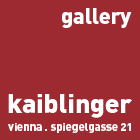Graphic arts
Hollegha Wolfgang
Klagenfurt *1929 - †2023
Wolfgang Hollegha depicts his view of the world that derives from his understanding of nature and which he explains through abstract forms. He expresses the wholeness of nature through light brush strokes that seem to lead upward.
The Carinthian Wolfgang Hollegha studied from 1947 until 1954 at the Academy of Fine Arts in Vienna. His teachers were Josef Dobrowsky and Herbert Boeckl. He is one of those artists that helped abstract art to its breakthrough after World War II in Vienna in the 1950s. In 1956 Wolfgang Hollegha, Markus Prachensky, Josef Mikl and Arnulf Rainer formed an artist group around Galerie Nächst St. Stephan. The group was strongly influenced by American Informel painting and was on the other hand a big influence for the Vienna Avantgarde Scene. Monsignore Otto Mauer, the director of the gallery, was the greatest patron of this movement.
1960 Hollegha was invited to New York by Clement Greenberg to take part in an abstract painting group exhibition. 1964 he took part at Documenta 3 in Kassel. Since 1962 he lives and works at Rechberg in Styria, where he built a studio made from wood with the impressive height of 15 meters. From 1972 until 1997 he was professor at the Academy of Fine Arts in Vienna.
Hollegha’s motifs are nature and life which he transforms by use of light and colour into abstract pictures. With generous gestures he poors the thinly mixed colours onto the large-sized canvas, that is placed on the floor during the process of painting. Broad bands of colour are created and the artist smears them with his hand or with a piece of cloth. From a paintbrush drops of colour are sprinkled on these bands. One can see connections to the techniques of the American abstract Expressionists like Sam Francis and Morris Louis and also to Jackson Pollock. The white and the coloured parts show together a harmonious composition.
